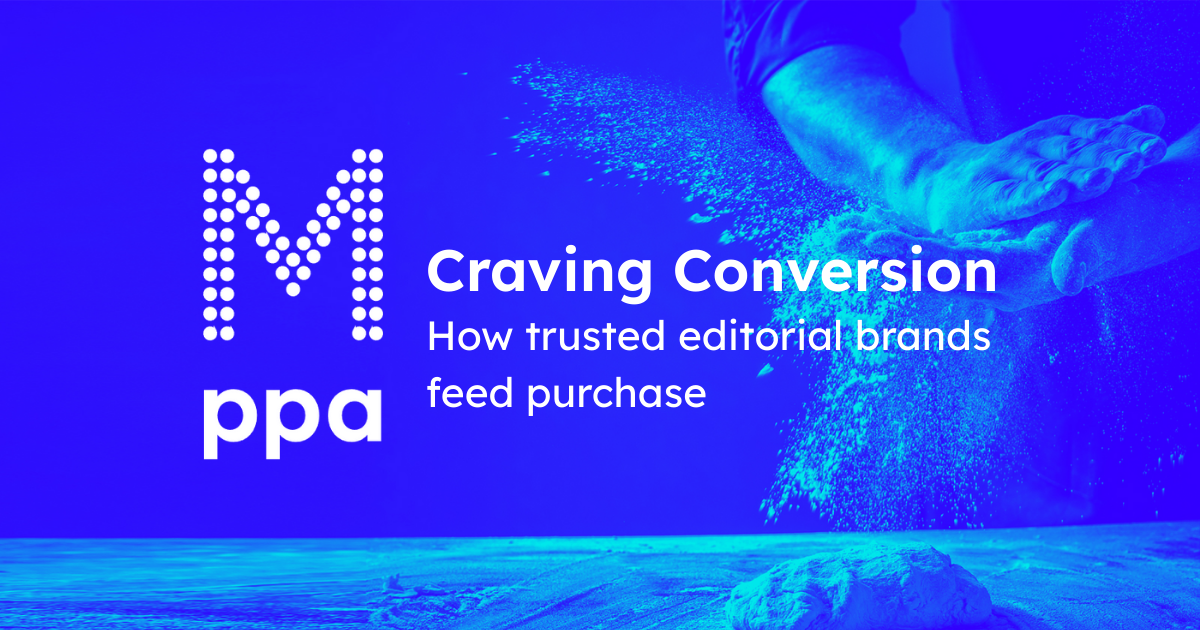Amanda Wigginton, audience strategy and insight specialist, takes a look at a new piece of research from PPA Magnetic – ‘Craving Conversion: from content to cart’, where quality editorial is clearly shown as having a direct role in discovering products, and inspiring people to purchase.
In physics the ‘Q Factor’ is often used in terms of energy. The higher it is, the better the quality. If only there was a way to factor a ‘Q Factor’ into planning and buying at a time when authentic voices, quality editorial, and brand safety matters more than ever to advertisers.
The value of trusted editorial brands online
We know that content generated and checked by knowledgeable editorial teams is publisher’s most valuable asset, however traditionally measurement of purchase behaviour starts with the role of advertising rather than the role of the content and context in which the advertising is seen. So in this research the usual ad measurement methodology was flipped on its head and put the value of trusted editorial content central to the objectives.
Passionate and highly engaged communities
Food and drink content is the largest lifestyle category online, with 28.2 million internet users interested in food and drink content. And 4.5 million of these people spend 20 per cent of their time seeking out food and drink content. Let that sink in – 20 per cent.
Those who love food content are a passionate community of highly engaged consumers. They seek out voices they can trust and brands they value in these communities. Brands that provide powerful shortcuts, not only for advice – the best recipes, the new food trends – but also drive purchase. That’s why 94 per cent of users who are most passionate about food content, visit a trusted editorial brand online, brands such as Good Food, Delicious, Time Out etc.
Every click counts
In the research carried out by Ipsos iris, a click-by-click view of consumers online food journeys was introduced to review the passive data of tens of thousands of customer journeys. And for the first time, when combined with Ipsos’s topic modelling capability, it was used to categorise content and identify what food content people are most passionate about, and this drives purchase behaviour.
This provided a rich understanding of consumers’ journeys online and the role that trusted editorial brands play in them. We can see who is engaging with trusted editorial brands, we can see where they fall in their online journeys, we can see how they influence consumers online behaviour, and most importantly we can see how they influence purchase consideration and lead to direct sales.
Content to cart
Aligning with people’s food passions and the content they read in trusted brands, results in more targeted, engaging and more effective advertising. The most engaged users looking at online magazine media were more likely to visit and go on to buy on a grocery site than the most engaged users of social (+21 per cent) and search (+59 per cent).
The most engaged trusted editorial brand users outperform every other digital channel for the number of food and drink topics consumed. Among heavy users of each platform, trusted editorial brands ‘discover’ +29 per cent more food topics than social, and 16 per cent more than search.
These magazine media brands play a key role in inspiring and guiding people through purchase decisions and choices. Their passion extends across a wide range of food topics too with everything from cooking, to recipes, to baking, where we see much higher levels of consumption than non-users.
Trusted editorial brands consumers are always in market and looking to buy. Looking at the percentage share of journeys where a grocery or supermarket is the next step in the journey, these quality content brands outperform.
And influence grows through the funnel. Expert editorial is designed to take people from content to cart. Users that spend the longest on trusted editorial brands visit more grocery brands each month, more frequently, and for longer – this is significantly higher compared to search or social.
The new research, Craving Conversion: From Content to Cart, highlights the powerful role quality content plays in influencing audience purchase behaviour. It shows how advertiser/publisher partnerships can harness this content at scale to reach highly targeted, passion-driven audiences. The findings underline the unique value of trusted editorial environments in delivering full-funnel impact, often outperforming social and search at the most crucial moments in the customer journey, from shaping consideration to driving direct purchase conversions.
If you want some Q factor in your campaigns, contact Amanda Wigginton, Strategy & Insight Consultant via hello@magnetic.media



